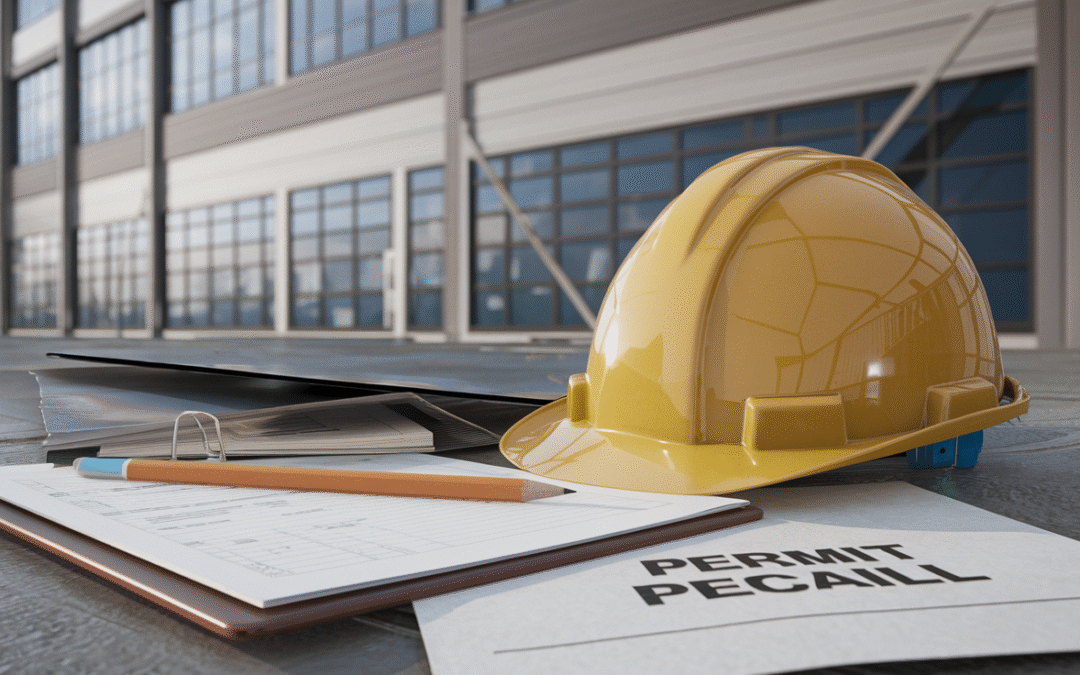Key Safety Protocols for Industrial Construction Sites
Industrial construction sites are complex operations that require rigorous safety protocols to ensure the well-being of all personnel involved. Implementing the right industrial construction safety protocols is not only a legal obligation but a necessary step to prevent accidents and promote a hazard-free environment. In the bustling regions of San Francisco, San Mateo, San Rafael, and Burlingame, where rapid industrial growth is evident, understanding and applying these protocols can make all the difference in successful project execution.
Table of Contents
- Understanding Industrial Safety Protocols
- Essential Protocols for Industrial Sites
- Equipment Safety and Maintenance
- Worker Safety: Training and Communication
- Real-World Scenario: Implementing Safety Protocols Effectively
- Conclusion
- Partner with iBuild
Understanding Industrial Safety Protocols
The construction industry’s primary focus is on mitigating risks and ensuring a safe workplace. With the dynamic nature of industrial construction, protocols must be continually assessed and updated. Safety protocols cover a wide range of areas including equipment handling, hazardous materials management, worker training, and emergency preparedness. A robust safety framework is essential to comply with OSHA standards and to protect the workforce from injuries and incidents.
Essential Protocols for Industrial Sites
Deploying essential industrial construction safety protocols begins with a comprehensive site analysis and risk assessment. Key protocols include:
Site Security
Ensuring the perimeter is secure can prevent unauthorized access, reducing the risk of accidents or theft. This includes erecting fences, security cameras, and controlled entry points.
Personal Protective Equipment (PPE)
Ensuring that all personnel are equipped with the necessary PPE is critical. This can range from hard hats and safety goggles to specialized gear for handling hazardous materials.
Hazardous Materials Handling
Strict guidelines for storage and disposal of hazardous materials need to be in place to avoid environmental contamination and worker exposure. Regular audits and compliance checks are crucial for maintaining safety standards.
Emergency Response Plans
Having a well-rehearsed emergency response plan is essential. This includes clear evacuation routes, contact lists, and access to first-aid resources, ensuring swift action during emergencies.
Equipment Safety and Maintenance
Equipment malfunction is a significant cause of accidents on construction sites. Regular maintenance schedules and safety checks should be mandated to ensure all machinery is in optimum condition. This also includes providing training for operators, reviewing equipment logs, and implementing lockout/tagout procedures to prevent accidental start-ups. Utilizing technology, such as IoT-based monitoring, can further enhance equipment safety by predicting potential failures before they occur.
Worker Safety: Training and Communication
Continual training programs are vital to keep the workforce informed about evolving safety practices and protocols. Clear communication channels should be established to facilitate regular safety briefings and updates. Interactive training sessions that incorporate virtual reality simulations can offer a more engaging and practical understanding of potential risk situations.
Real-World Scenario: Implementing Safety Protocols Effectively
Consider a recent project by a major construction firm in Burlingame, where enhanced safety protocols were implemented after an initial assessment revealed several potential safety breaches. The integration of heightened security measures, improved PPE distribution, and rigorous equipment maintenance schedules resulted in zero incidents during the project’s duration. This proactive approach underscores the importance and efficacy of comprehensive safety protocols in industrial construction.
iBuild Design and Construction excels in such strategic implementations by ensuring that all safety measures are integrated into the project management lifecycle, from planning through execution. Their architect-led model ensures that safety and design quality are never compromised, delivering projects that are safe and compliant with industry standards.
Conclusion
Adhering to industrial construction safety protocols is not just a regulatory necessity, but a commitment to safeguard life and property. Through proactive risk management and continuous training, construction sites across the Bay Area can ensure safer working environments. As industrial projects become more complex, the onus lies on property developers and construction managers to pioneer improved safety strategies that align with modern technological advancements.
Partner with iBuild
Are you ready to prioritize safety in your next industrial construction project? Partner with iBuild Design and Construction to integrate robust safety protocols seamlessly into your project lifecycle. Contact our team today to discuss how we can help make your project safe, efficient, and successful.

